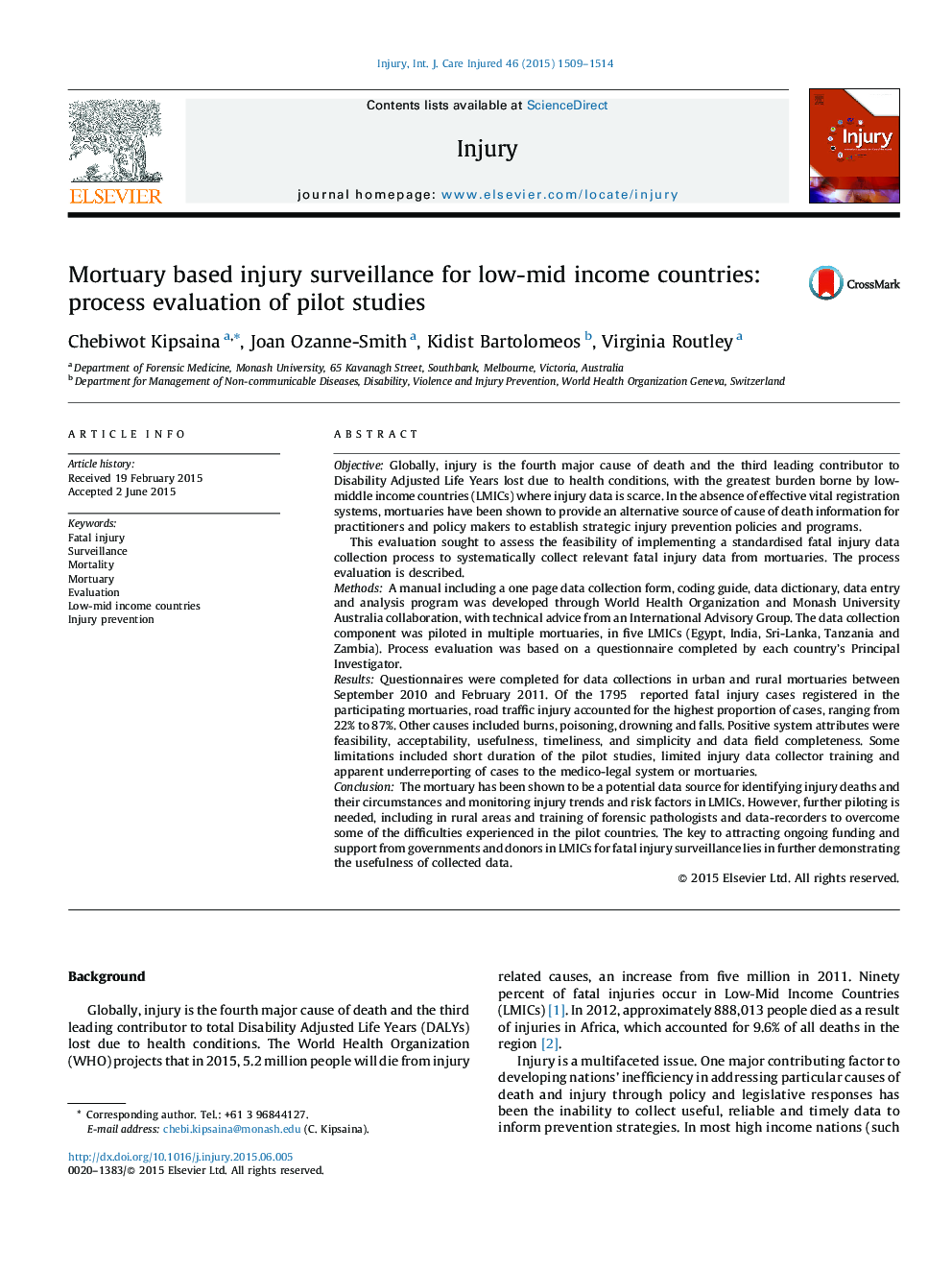| کد مقاله | کد نشریه | سال انتشار | مقاله انگلیسی | نسخه تمام متن |
|---|---|---|---|---|
| 3238889 | 1205976 | 2015 | 6 صفحه PDF | دانلود رایگان |
ObjectiveGlobally, injury is the fourth major cause of death and the third leading contributor to Disability Adjusted Life Years lost due to health conditions, with the greatest burden borne by low-middle income countries (LMICs) where injury data is scarce. In the absence of effective vital registration systems, mortuaries have been shown to provide an alternative source of cause of death information for practitioners and policy makers to establish strategic injury prevention policies and programs.This evaluation sought to assess the feasibility of implementing a standardised fatal injury data collection process to systematically collect relevant fatal injury data from mortuaries. The process evaluation is described.MethodsA manual including a one page data collection form, coding guide, data dictionary, data entry and analysis program was developed through World Health Organization and Monash University Australia collaboration, with technical advice from an International Advisory Group. The data collection component was piloted in multiple mortuaries, in five LMICs (Egypt, India, Sri-Lanka, Tanzania and Zambia). Process evaluation was based on a questionnaire completed by each country's Principal Investigator.ResultsQuestionnaires were completed for data collections in urban and rural mortuaries between September 2010 and February 2011. Of the 1795 reported fatal injury cases registered in the participating mortuaries, road traffic injury accounted for the highest proportion of cases, ranging from 22% to 87%. Other causes included burns, poisoning, drowning and falls. Positive system attributes were feasibility, acceptability, usefulness, timeliness, and simplicity and data field completeness. Some limitations included short duration of the pilot studies, limited injury data collector training and apparent underreporting of cases to the medico-legal system or mortuaries.ConclusionThe mortuary has been shown to be a potential data source for identifying injury deaths and their circumstances and monitoring injury trends and risk factors in LMICs. However, further piloting is needed, including in rural areas and training of forensic pathologists and data-recorders to overcome some of the difficulties experienced in the pilot countries. The key to attracting ongoing funding and support from governments and donors in LMICs for fatal injury surveillance lies in further demonstrating the usefulness of collected data.
Journal: Injury - Volume 46, Issue 8, August 2015, Pages 1509–1514
